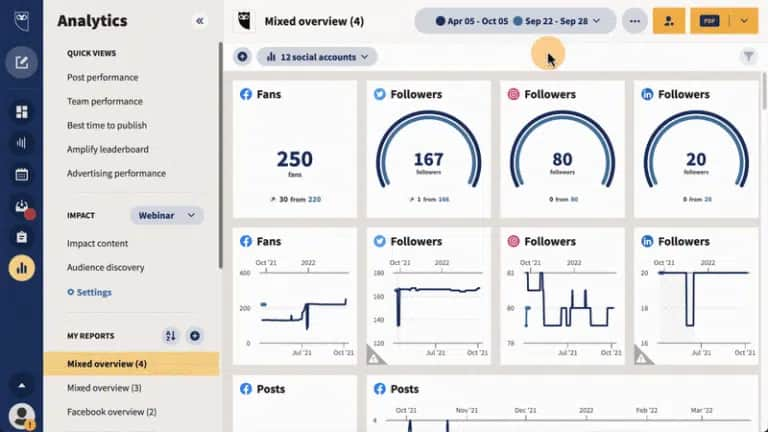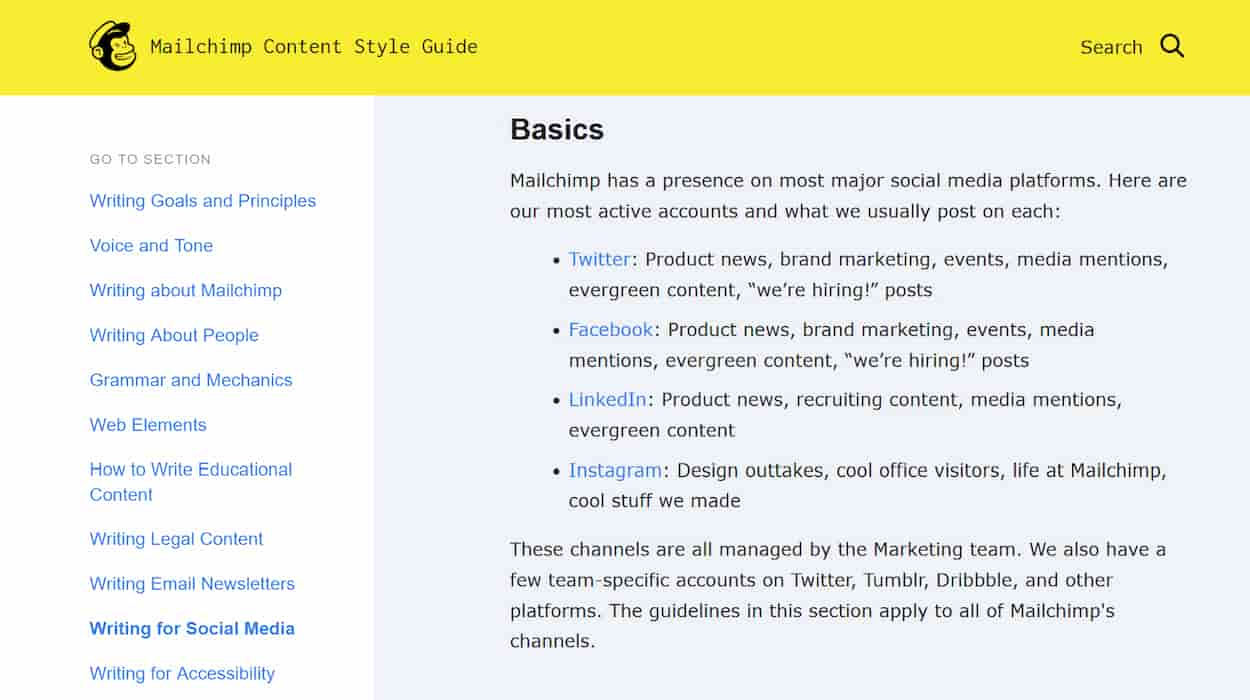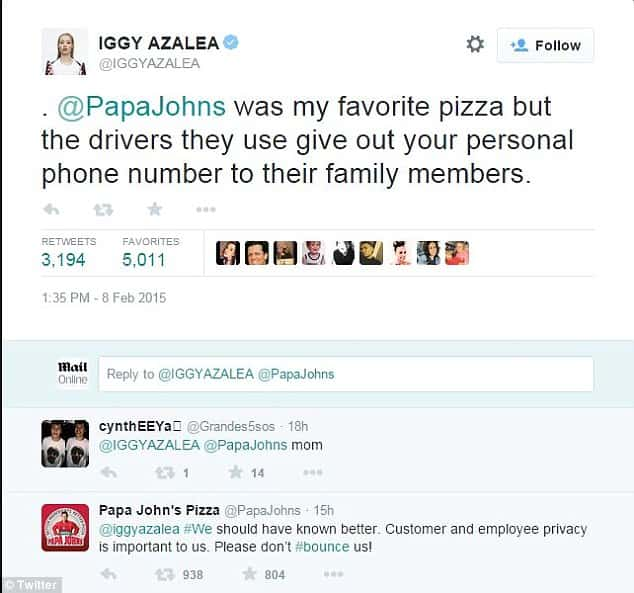How to Develop and Execute a Winning Social Media Reputation Strategy
Your brand’s reputation is everything. The rise of social media has made maintaining a positive brand image more critical than ever.
In fact, potential customers will often check out your social media presence before deciding to do business with you. What’s clear is this: A strong reputation on social media can help establish your brand as a leader in your industry.
But how do you develop and execute a winning social media reputation strategy?
Read on to learn more.
1. Assess current social media reputation
You need to know where you stand so you’ll know what your social media reputation goals and objectives should be in the first place.
So, first and foremost, conduct a sentiment analysis. This will help you evaluate the common themes of people’s conversations around your brand and critical areas of customer concern or praise. Audit all your social media sites for customer sentiment:
- “X” – Formerly Twitter
- YouTube
Evaluate metrics to set the right numerical goals and objectives for your online reputation management strategy on social media. Some good metrics to track are:
- Follower count
- Engagement levels
- Content quality metrics
Tools such as Hootsuite can help you get a complete view of your social media activities. You can see your social media performance in one place, as shown in the image above.
2. Define your goals for social media reputation
Once you know where you stand, you can now define your social media reputation goals. Zero in on one platform first. Let’s assume you find there are more negative comments about you than positive ones on Instagram. So, you could set as your goal to increase positive mentions about your brand on Instagram.
But you want to make that goal SMART—Specific, Measurable, Achievable, Relevant—so you can craft a tailored social media reputation strategy. So, using that generic goal as a basis, this could be your SMART goal: to increase positive mentions about your brand on Instagram by 15% in two months.
You will then want to specify your smaller objectives that will help you achieve this primary goal. So, one objective could be to boost your Instagram following by 10% in two months. Another one could be to increase the high-quality social media posts published on your Instagram account by 20% in two months.
Then specify again how you plan to achieve each of these smaller objectives. The more specific your definition of goals and objectives, the better.
If you’re not using percentages, you shouldn’t set the measurable aspects of your goals and objectives on a whim. You need to go back to your current numbers–followers, engagement levels, etc—to determine what constitutes a reasonable numerical goal or objective. So, if you have 200 Instagram followers now, your objective could be “to increase Instagram followers to 250 in two months.”
Follow the same steps to determine your social media reputation goals and objectives for your other social media platforms.
3. Execute plan while ensuring consistent brand identity
Now, it’s time to execute your plan. Just follow your plan to the letter. If it’s that specific, you shouldn’t have a hard time.
But while executing your plan, make sure you always stick to your brand identity. Your social media reputation branding should align with your brand’s key attributes and values.
So, if you haven’t done so yet, identify your brand’s top three to five defining attributes, including core values, personality traits, and unique selling points. For example, a sustainable clothing brand could list ethical, eco-friendly, and affordable attributes.
These values should be reflected throughout all your marketing efforts across your platforms.
So, when creating the relevant content you need to achieve your social media reputation goals, ensure it reflects your brand’s values. Use high-quality images, videos, and graphics, too. If you don’t do this, your social media reputation strategy might just backfire. A brand that publishes mediocre content never has a good reputation with its audience.
Follow in the footsteps of OREO, which always publishes stunning visuals:
Finally, to ensure your brand identity remains consistent over time, define clear guidelines for its use across all social media profiles.
Mailchimp, for example, has clear guidelines outlining which channels they’re active on, how they use them, and who manages them.
Your social media guidelines should clarify the tone of voice used in communications across different channels. You also want to indicate visual elements used in marketing materials, for example, colors, fonts, etc., and the type of content you share on each social network.
4. Engage with your audience
As you execute your plan, interact with your audience. This can help you boost brand equity and encourage followers to be more involved. Getting your audience involved can boost your chances of achieving your social media reputation goals and objectives.
Think about it. In a scenario where you want to boost positive mentions about your brand on Instagram, Instagram users who are involved are the ones who are more likely to create those posts that talk positively about you.
So, to engage your audience, consider running contests and giveaways on your social media accounts. You can also create interactive content such as polls, quizzes, and surveys.
You should also talk directly to your audience. Use social listening tools like Hootsuite and TweetDeck or reputation management software. These can help you track online conversations related to your brand on social media. Then you can jump in on those relevant conversations.
But don’t just leave one-liners or phrases. You want to show your audience you’re really invested in starting conversations with them. Glossier, for example, builds relationships with its followers by replying to comments just as a friend would do. It ensures a personalized experience for users.
Also, don’t just engage with neutral or satisfied customers. You want to interact even with people who posted negative customer feedback. This way, as a business owner, you can address customer concerns promptly.
This is exactly what Papa John’s did when Iggy Azalea published a customer complaint on “X”. She said her personal information had been stolen by the pizza company’s delivery personnel. Papa John’s took responsibility and immediately responded to the Tweet:
This brings us to the importance of a communication strategy. Set clear guidelines for how to respond to online reviews. If you’re starting, review responses to customers prior to publication until everyone on your social media team is on the same page. If you don’t have time to do that, create a social media response template for every possible scenario.
5. Measure and adjust
You want to ensure your social media reputation strategy is yielding the best results. So, make sure you go back to your goals and objectives to see if you’re on track to achieving them.
Let’s go back to our goal of increasing Instagram users’ positive mentions about your brand by 15% in two months. Let’s assume, too, that you’re in your first month of implementation.
You checked your data, and this is what you found: Positive Instagram mentions about your brand only increased by 2%. The conclusion is, to reach your 15% goal, you need to step up your game.
To see where you’re failing, go back to the smaller objectives you put forward to achieve your even bigger goal. Just to remind you, for our Instagram goal, these were our two specified smaller objectives:
- to boost your Instagram following by 10% in two months.
- to increase the number of published posts on your Instagram account by 20% in two months.
If you already increased your Instagram following by 10% in the first month, something you had intended to achieve in the second month, then that’s obviously not the problem.
Let’s assume you managed to increase your Instagram account’s posts by 5% in the first month. You can conclude that’s the issue. After all, with a given objective to increase the number of your business’ Instagram posts by 20% in two months, in the first month, you should have posted at least an increase of 10%.
Based on this data analysis, then, to achieve your primary goal, you’d need to scale your social media content creation. So, you’d probably hire more people to write or use generative AI tools that can fast-track the writing process.
Make sure you also check customer reactions to your team’s engagement with social media users.
Once you get a holistic view of your performance so far in terms of achieving your social media reputation goals, you can adjust your strategy accordingly.
In closing
Social media reputation management is an important component of your business’ success. But to ensure a good online reputation on social media networks, you need a winning strategy.
You learned how to create and implement one in this article. Define your goals and objectives, assess your current social media reputation, execute your plan while ensuring consistent branding, and engage with followers. Finally, measure and adjust your strategy.
Follow these steps, and you can ensure a good brand perception on social media. You’ll be well on your way to business success.
Tags: Business Reputation Marketing, Reputation Marketing, Social Media Marketing.





